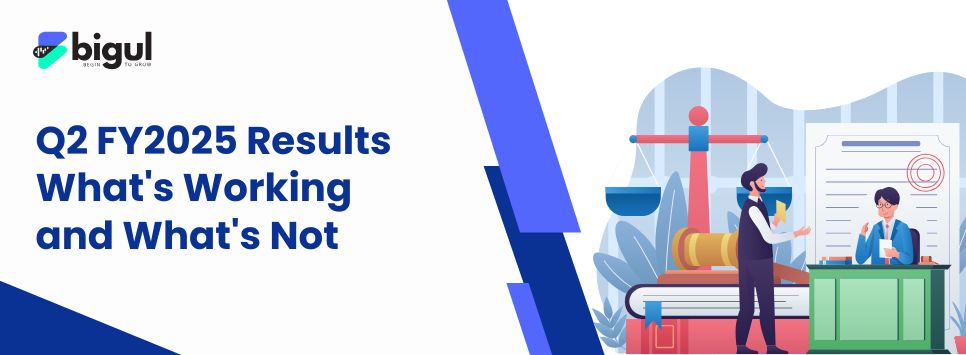Fundamental analysis is like doing a complete “health checkup” of a company before you invest. Instead of watching daily price swings, you study the business itself – its profits, debts, assets and so on – to gauge financial performance and future strength. This matters a lot for long-term stock market investing.
By focusing on the underlying business (not short-term market noise), fundamentally strong companies tend to grow in value over time. For example, Indian giants like Infosys, TCS, Bosch India and Eicher Motors have delivered impressive long-term returns by being financially healthy.
In other words, using fundamental analysis and key financial ratios can help you pick stock market investments that build wealth over the years.
Fundamental Analysis 101
Fundamental analysis means digging into a company’s financial statements (income statement, balance sheet, cash flows) and other data to judge its true worth and prospects. Think of it as studying a company’s health, growth and industry position – just like you’d check a car’s engine and mileage before buying it. In the Indian context, this is especially important: India’s stock market has huge, well-known companies (Reliance, HDFC Bank, Infosys, etc.) where long-term investors want to be confident the business is sound.
Fundamental analysis is for long-term investors. If you plan to hold stocks for years (or decades), you care about how a company performs over time. Short-term traders might watch charts, but a fundamental investor studies financial performance and management quality. In India, companies like Infosys, TCS, Nestle India and others have shown how following fundamentals can lead to big gains.
Key Financial Ratios for Investors
Key to fundamental analysis is to work out and contrast major financial ratios. Ratios simplify the complicated information found in financial statements. They make it possible to know if the company is making a profit, how they use their resources and their profit margins. People who are new to accounting will find six ratios to be particularly useful. Let’s break each down in simple terms, with formula, meaning, and an Indian example.
Return on Equity (ROE)
-
What it is: ROE measures how well a company turns shareholder equity (the money invested by owners) into profits. In other words, it shows how effectively a business uses its owners’ money to generate net income.
-
Formula: ROE = (Net Income ÷ Shareholders’ Equity) × 100
-
Why it matters: A high ROE means the company earns a lot of profit from each rupee of equity. This indicates efficient management and strong business economics.
-
Example: Indian IT giants like Infosys and TCS typically have very high ROE. For example, Infosys recently had an ROE around 29–30%, meaning it earned roughly Rs30 for every Rs100 of equity it has.
Operating Profit
-
What it is: Operating profit (also called EBIT: Earnings Before Interest and Taxes) is the profit a company makes from its core business activities. It excludes interest costs and taxes.
-
Formula: Operating Profit = Operating Revenue – Operating Expenses
-
Why it matters: A higher operating profit means the company’s main activities generate strong earnings. If a company’s revenue is rising but operating profit is falling, it might mean costs are rising too fast.
-
Example: Infosys reported an operating profit of Rs34,424 crore. With a revenue of Rs162,990 crore, that gives an operating profit margin of about 21.1%.
Operating Profit Margin (OPM)
-
What it is: OPM is the percentage of revenue that becomes operating profit.
-
Formula: OPM = (Operating Profit ÷ Revenue) × 100
-
Why it matters: OPM measures efficiency. A higher margin means the company keeps more of each rupee of sales as profit. It provides more cushion against price drops or cost increases.
-
Example: Infosys had an operating margin of 21.1%. That means it kept Rs21.10 of every Rs100 of revenue as operating profit, which is quite healthy for an IT services firm.
Net Profit
-
What it is: Net profit (also called net income or the “bottom line”) is the final profit after all expenses, interest, taxes, and other costs have been subtracted from total revenue.
-
Formula: Net Profit = Total Revenue – Total Expenses
-
Why it matters: Net profit is the ultimate measure of profitability. A consistently high or growing net profit is good; shrinking net profit or losses are warning signs.
-
Example: HDFC Bank’s net profit was Rs46,149 crore in FY2023, up from Rs38,151 crore the year before. TCS earned about Rs42,303 crore net profit in FY2023. Infosys’s net profit was about Rs24,108 crore.
Return on Assets (ROA)
-
What it is: ROA measures how efficiently a company uses all its assets to generate profit.
-
Formula: ROA = (Net Income ÷ Total Assets) × 100
-
Why it matters: A higher ROA means the company generates more profit per rupee of assets. Industries vary: banks have low ROA (1–2%), while tech firms can have ROA above 10%.
-
Example: Reliance Industries had an ROA of around 3–5%, reflecting its huge asset base in energy and telecom. By contrast, a lean IT firm might have an ROA of over 10%.
Return on Capital Employed (ROCE)
-
What it is: ROCE measures how well a company is using all its capital (equity + debt) to generate profit.
-
Formula: ROCE = (EBIT ÷ Capital Employed) × 100
-
Why it matters: ROCE accounts for how much the company has borrowed. A higher ROCE indicates more efficient use of capital.
-
Example: Infosys’s ROCE was around 37.5%. This means it earned Rs37.50 of profit for every Rs100 of capital it employs.
Putting it All Together
These six ratios – ROE, Operating Profit, Operating Profit Margin, Net Profit, ROA, and ROCE – are powerful tools in fundamental analysis. They each highlight different aspects of a company’s financial performance: profitability, efficiency, and returns.
By studying these ratios for Indian companies, you can compare peers, spot trends, and decide if a stock is fundamentally strong. A company with rising ROE and ROCE over years is likely improving its profitability and asset use. Declining margins or a ROA much below peers might signal trouble.
In summary, fundamental analysis and key financial ratios help long-term investors make informed decisions. They bring expertise and trustworthiness into investing by focusing on hard data, not hype.









.jpg)
.jpg)
